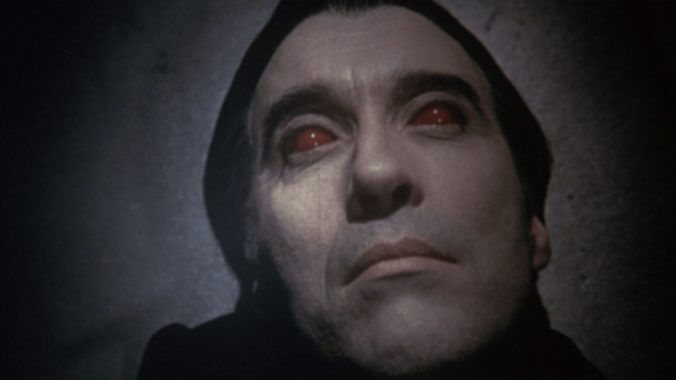How Christopher Lee Became the Greatest Dracula of All Time

Now that we’re positively swimming in adaptations of Bram Stoker’s Dracula, it’s easy to forget just how much of our cultural understanding of the character was built around one actor for decades. Bela Lugosi played the role for Universal a number of times after originating the part on stage, and to this day, when you ask many people about the vampire, they imagine Lugosi’s theatrical lugubriousness above all else. His performance was typical of the early era of sound cinema, partly defined by his own inexperience with the English language and the limitations of a small budget. The more he played the role, and the more audiences grew weary of the early Hollywood horror boom, the more mannered and parodic he became. Eventually, despite his early impact and undeniable allure, Dracula stopped being scary, and nobody dared to try and follow up Universal’s version of the character. Well, not in Hollywood. Across the pond by the mid-1950s, change was in the air.
Hammer Film Productions was established in 1934, and for well over 20 years, they produced a slew of movies across various genres. But by 1955, they’d found a profitable niche in horror. Two years later, they made The Curse of Frankenstein, their first color horror that outraged critics but made a ton of money. Starring as the monster was Christopher Lee, a bit-part actor who was 6’5” and cast mostly because of that. His stature and gentlemanly allure made him particularly appealing for the studio’s next horror film, Dracula. According to producer Anthony Hinds when it came to casting Dracula, “it never occurred to any of us to use anyone else but Chris Lee.”
1958’s Dracula is not an especially faithful adaptation of Stoker’s novel. Most films aren’t. It’s more concerned with emphasizing the gothic salaciousness that remains implied throughout much of the book. The details that Hays Code-era Hollywood couldn’t portray are in full force here, most notably the ever-exciting combination of sex and blood. For a post-War Britain struggling to escape the staid confines of the stiff upper lip, Hammer was primed to shake the dust off the coffin and make the subtext text.
One of the key subtexts of Dracula has always been the idea that this dark foreigner would come over here and take all our women. Lee’s Count makes it abundantly clear that the ladies are all too happy to fall into his welcoming arms. Christopher Lee benefitted from color cinema, which added depth to his dark eyes and made the glaring red of the fake blood Hammer loved seem more phantasmagorical than ever before. His Dracula is dignified, forever in control of the situation and suave in a way that other male characters are simultaneously wooed and made suspicious by. His presence is so magnetic, so otherworldly in its sophistication and menace, that you forget he’s really not on-screen for that long.
In a 1990 interview with NPR, Christopher Lee said that, through reading the novel, he discovered that Dracula was “heroic, erotic and romantic.” He also viewed the character in a far more sympathetic light than Lugosi had been allowed to convey. “Here’s a man who is immortal. Here is a man who, through being immortal, is a lost soul. Here is a man who experiences the loneliness of evil, something he can’t control, who wants to die but there is a force in him, a malefic force, which drives him to do these terrible things.” It’s that dignity that carries Lee’s Count through the franchise, that indomitable force of a man who is torn between life and death and whose isolation needs to be fed as much as his hunger for blood.
-

-

-

-

-

-

-

-

-

-

-

-

-

-

-

-

-

-

-

-

-

-

-

-

-

-

-

-

-

-

-

-

-

-

-

-

-

-

-

-








































